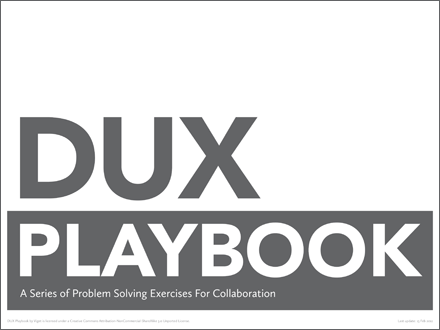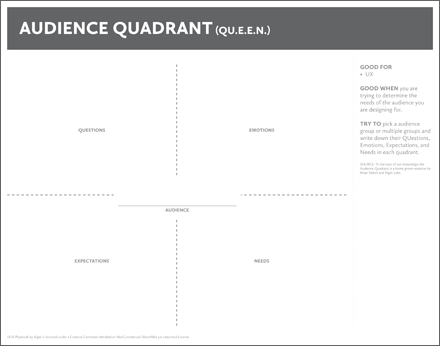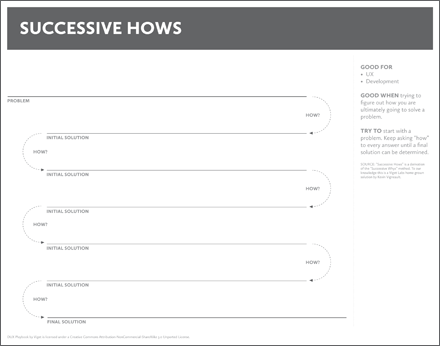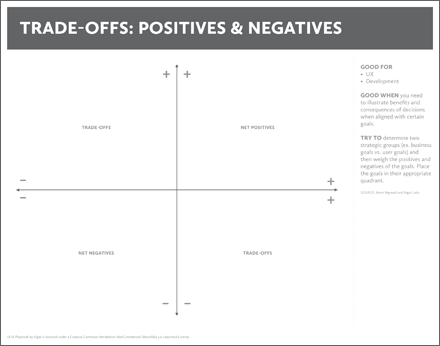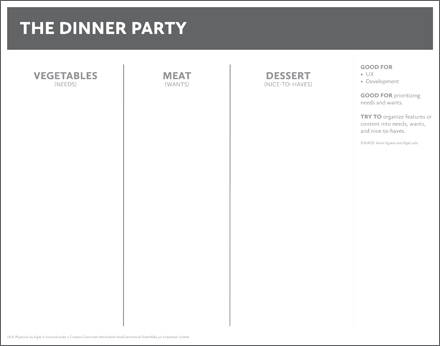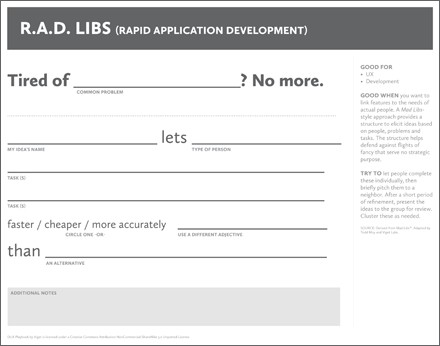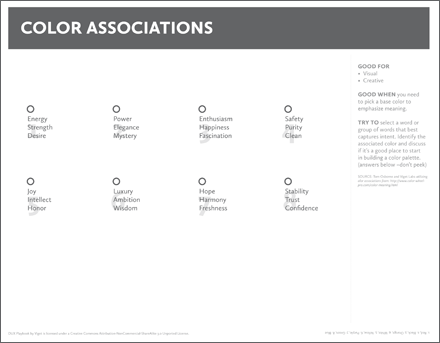Create a Playbook for Collaboration
Tom Osborne, Former VP, Design
Article Category:
Posted on
Every good game plan needs a playbook. Not something that choreographs every move play-by-play. Rather, something that serves as a guide or reference for plays you might use during a game. While you may go into a game with your no-huddle offense, at some point you're going to have to adapt to the changing game.
This is why we created our own playbook. Some time ago we identified that we wanted to better our game in our kick-off meetings. Prior to this, we had been getting by just fine just showing up ready to play. That worked well for a good while, but, as we've matured, we've learned a lot. More specifically, we've learned that going through the same motions time after time becomes monotonous and that the same script doesn't work for every client when every client has different needs.
We knew we had to work harder to customize our approach to kick-offs and other meetings. We knew we'd have to get outside of our comfort zones a little. While we were comfortable standing in front of whiteboards and taking notes, we knew we'd have to dig in further. Fortunately, around this time a few resources like goodkickoffmeetings.com by Kevin Hoffman and gogamestorm.com by Dave Gray, Sunni Brown, and James Macanufo were emerging to help us with our mission. Learning from resources like these, we began to establish a few go-to exercises while adapting or creating a few of our own. Since then, not only have our meetings become more fun, we've built stronger relationships with our clients while building up our confidence.
While our playbook is still being written, we wanted to go ahead and share a few of our favorites in a downloadable PDF with the hopes that we could help others in ways similar to how we've been helped along in our journey. Within our DUX Playbook (PDF), you'll find a dozen or so exercises you can use to help you jump start your projects. Each has some notes to help you understand for which scenarios the exercise is suited as well as some simple "how to" instructions. DUX in this context stands for Design for User Experience in case that acronym is new to you. Take a look at some of what you'll find in this document.
A Few Highlights
Audience Quadrant (QU.E.E.N.)
A good way to isolate some of the human components that ultimately need to be accounted for as you set user goals.
Successive Hows
Derivative of the popular "5 Whys" exercise to help work through some of the pragmatic issues that could arise.
Trade-offs: Positives & Negatives
Just about everything has a "give and take." This will help you prioritize your needs.
The Dinner Party
A fun way of separating needs, wants, and "nice-to-haves.
R.A.D. Libs
Want to ensure your idea has a solution to a common problem? Try this.
Color Associations
Choosing colors can be difficult. Use word association as a means to find a starting point.
Download our DUX Playbook (PDF) to find these exercises and more.
What are some of your go-to meeting exercises?
